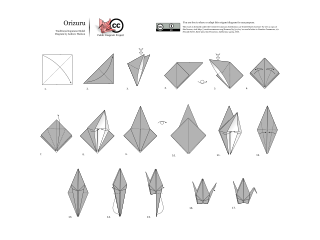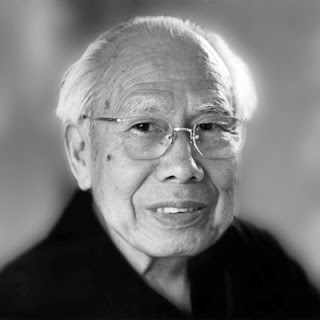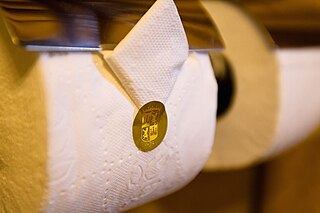
Origami is the art of paper folding, which is often associated with Japanese culture. In modern usage, the word "origami" is used as an inclusive term for all folding practices, regardless of their culture of origin. The goal is to transform a flat square sheet of paper into a finished sculpture through folding and sculpting techniques. Modern origami practitioners generally discourage the use of cuts, glue, or markings on the paper. Origami folders often use the Japanese word kirigami to refer to designs which use cuts.

The Yoshizawa–Randlett system is a diagramming system used to describe the folds of origami models. Many origami books begin with a description of basic origami techniques which are used to construct the models. There are also a number of standard bases which are commonly used as a first step in construction. Models are typically classified as requiring low, intermediate or high skill depending on the complexity of the techniques involved in the construction.
The art of origami or paper folding has received a considerable amount of mathematical study. Fields of interest include a given paper model's flat-foldability and the use of paper folds to solve mathematical equations.

Modular origami or unit origami is a paperfolding technique which uses two or more sheets of paper to create a larger and more complex structure than would be possible using single-piece origami techniques. Each individual sheet of paper is folded into a module, or unit, and then modules are assembled into an integrated flat shape or three-dimensional structure, usually by inserting flaps into pockets created by the folding process. These insertions create tension or friction that holds the model together.

Robert Harbin was a British magician and author. He is noted as the inventor of a number of classic illusions, including the Zig Zag Girl. He also became an authority on origami.

Chinese paper folding, or zhezhi, is the art of paper folding that originated in medieval China.

Akira Yoshizawa was a Japanese origamist, considered to be the grandmaster of origami. He is credited with raising origami from a craft to a living art. According to his own estimation made in 1989, he created more than 50,000 models, of which only a few hundred designs were presented as diagrams in his 18 books. Yoshizawa acted as an international cultural ambassador for Japan throughout his career. In 1983, Emperor Hirohito awarded him the Order of the Rising Sun, 5th class, one of the highest honors bestowed in Japan.

Paper craft is a collection of crafts using paper or card as the primary artistic medium for the creation of two or three-dimensional objects. Paper and card stock lend themselves to a wide range of techniques and can be folded, curved, bent, cut, glued, molded, stitched, or layered. Papermaking by hand is also a paper craft.

Wet-folding is an origami technique developed by Akira Yoshizawa that employs water to dampen the paper so that it can be manipulated more easily. This process adds an element of sculpture to origami, which is otherwise purely geometric. Wet-folding is used very often by professional folders for non-geometric origami, such as animals. Wet-folders usually employ thicker paper than what would usually be used for normal origami, to ensure that the paper does not tear.

A fortune teller is a form of origami used in children's games. Parts of the fortune teller are labelled with colors or numbers that serve as options for a player to choose from, and on the inside are eight flaps, each concealing a message. The person operating the fortune teller manipulates the device based on the choices made by the player, and finally one of the hidden messages is revealed. These messages may purport to answer questions or they may be activities that the player must perform.

The history of origami followed after the invention of paper and was a result of paper's use in society. Independent paper folding traditions exist in East Asia, and it is unclear whether they evolved separately or had a common source.

One thousand origami cranes is a group of one thousand origami paper cranes held together by strings. An ancient Japanese legend promises that anyone who folds a thousand origami cranes will be granted a wish by the gods. Some stories believe you are granted happiness and eternal good luck, instead of just one wish, such as long life or recovery from illness or injury. This makes them popular gifts for special friends and family. The crane in Japan is one of the mystical or holy creatures and is said to live for a thousand years: That is why 1000 cranes are made, one for each year. In some stories it is believed that the 1000 cranes must be completed within one year and they must all be made by the person who is to make the wish at the end.

Origami paper is used to fold origami, the art of paper folding. The only real requirement of the folding medium is that it must be able to hold a crease, but should ideally also be thinner than regular paper for convenience when multiple folds over the same small paper area are required.

Kawasaki's theorem is a theorem in the mathematics of paper folding that describes the crease patterns with a single vertex that may be folded to form a flat figure. It states that the pattern is flat-foldable if and only if alternatingly adding and subtracting the angles of consecutive folds around the vertex gives an alternating sum of zero. Crease patterns with more than one vertex do not obey such a simple criterion, and are NP-hard to fold.
Rigid origami is a branch of origami which is concerned with folding structures using flat rigid sheets joined by hinges. That is, unlike with paper origami, the sheets cannot bend during the folding process; they must remain flat at all times. However, there is no requirement that the structure start as a single flat sheet – for instance shopping bags with flat bottoms are studied as part of rigid origami.

Hotel toilet paper folding is a common practice performed by hotels worldwide as a way of assuring guests that the bathroom has been cleaned.
Paper toys are toys made of paper. They are constructed in several ways, by folding, as in paper airplanes, paper fortune tellers or Origami, or by cutting, decorating or assembling pieces of paper with glue or tape to create a paper doll or paper model.

The Strange Case of Origami Yoda is a children's novel written by Tom Angleberger that was first published on March 1, 2010, by Amulet Books. It follows the story of a young boy named Tommy who is trying to figure out if Dwight's Origami Yoda is actually real or it's a hoax that Dwight created. It became the first in a series of popular Star Wars themed novels penned by Angleberger, which includes Darth Paper Strikes Back!, The Secret of the Fortune Wookiee, The Surprise Attack of Jabba the Puppett, Princess Labelmaker to the Rescue, and Emperor Pickletine Rides the Bus as well as an activity book titled ART2-D2's Guide to Folding and Doodling. There is also a rare art book with Han Foldo on it.

The orizuru, or paper crane, is a design that is considered to be the most classic of all Japanese origami. In Japanese culture, it is believed that its wings carry souls up to paradise, and it is a representation of the Japanese red-crowned crane, referred to as the "Honourable Lord Crane" in Japanese culture. It is often used as a ceremonial wrapper or restaurant table decoration. A thousand orizuru strung together is called senbazuru (千羽鶴), meaning "thousand cranes", and it is said that if someone folds a thousand cranes, they are granted one wish.

Paper Mario: The Origami King is a 2020 cross-genre video game for the Nintendo Switch console. Developed by Intelligent Systems and published by Nintendo, it is the sixth game in the Paper Mario series and part of the larger Mario franchise. The story follows Mario and his friends as he sets out on a journey to prevent the Mushroom Kingdom from being transformed into origami. To do so, Mario must free Princess Peach's castle from five decorative streamers that extend across the kingdom.















